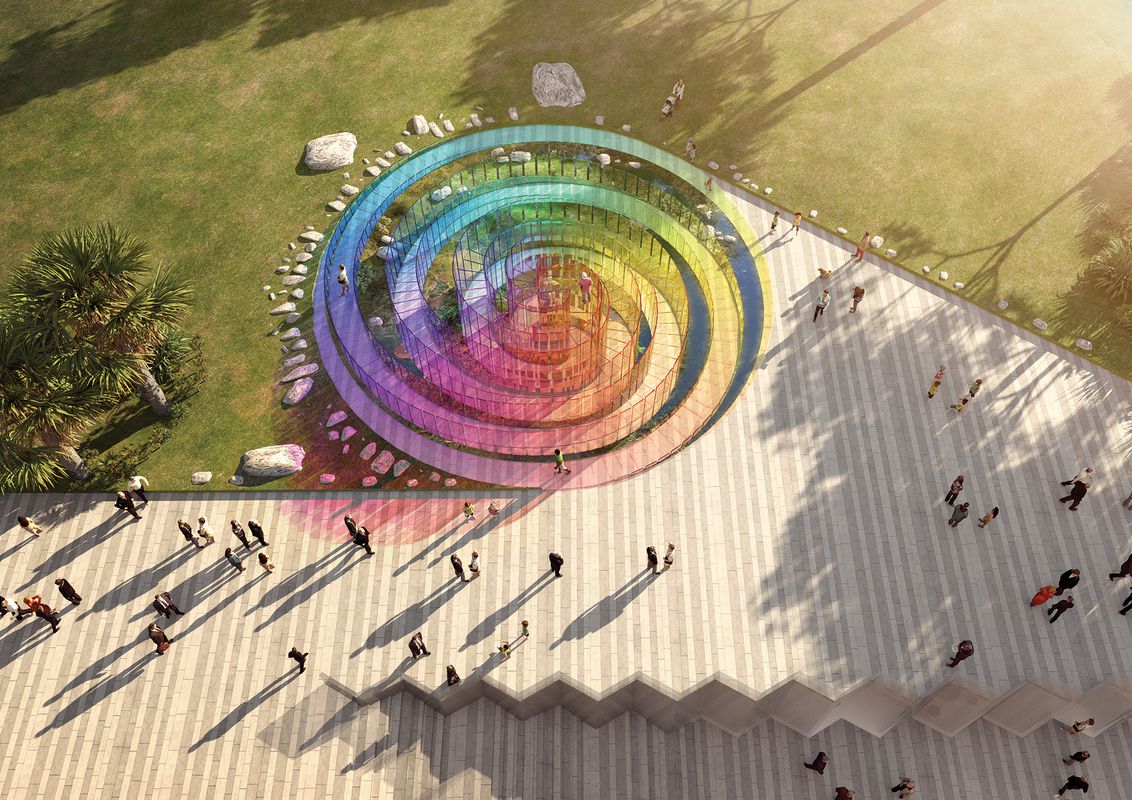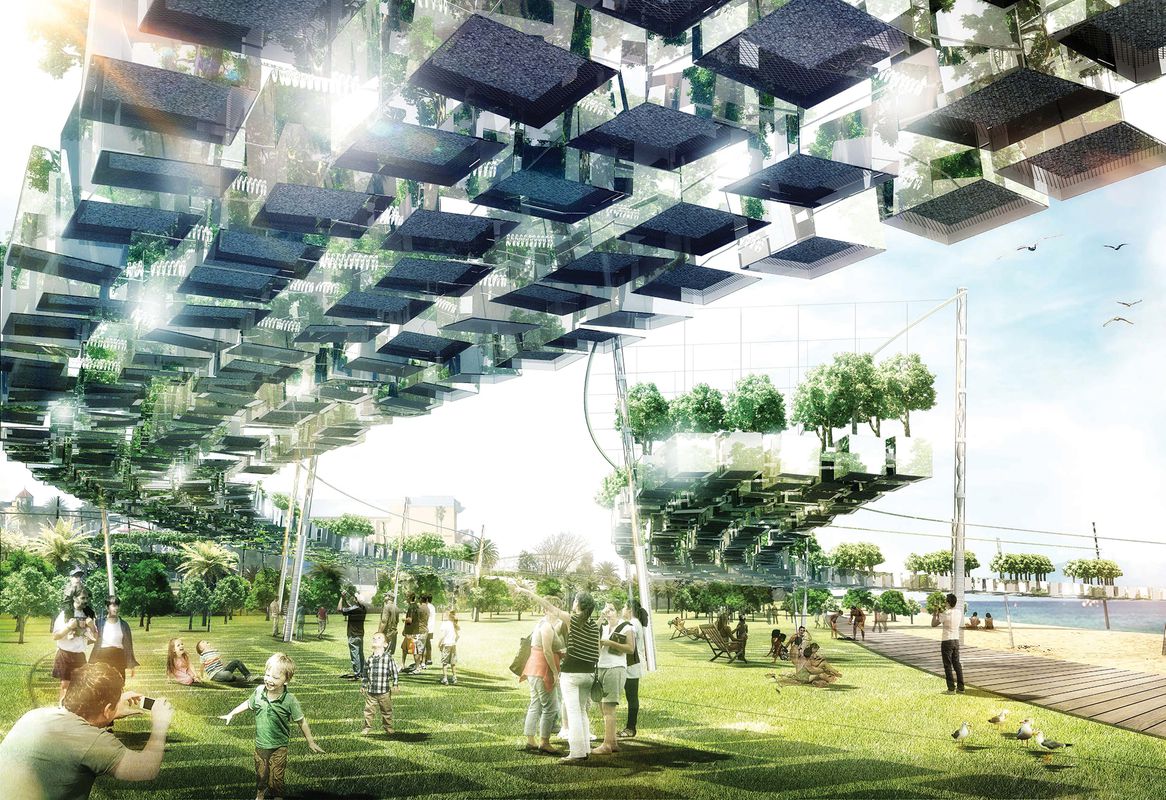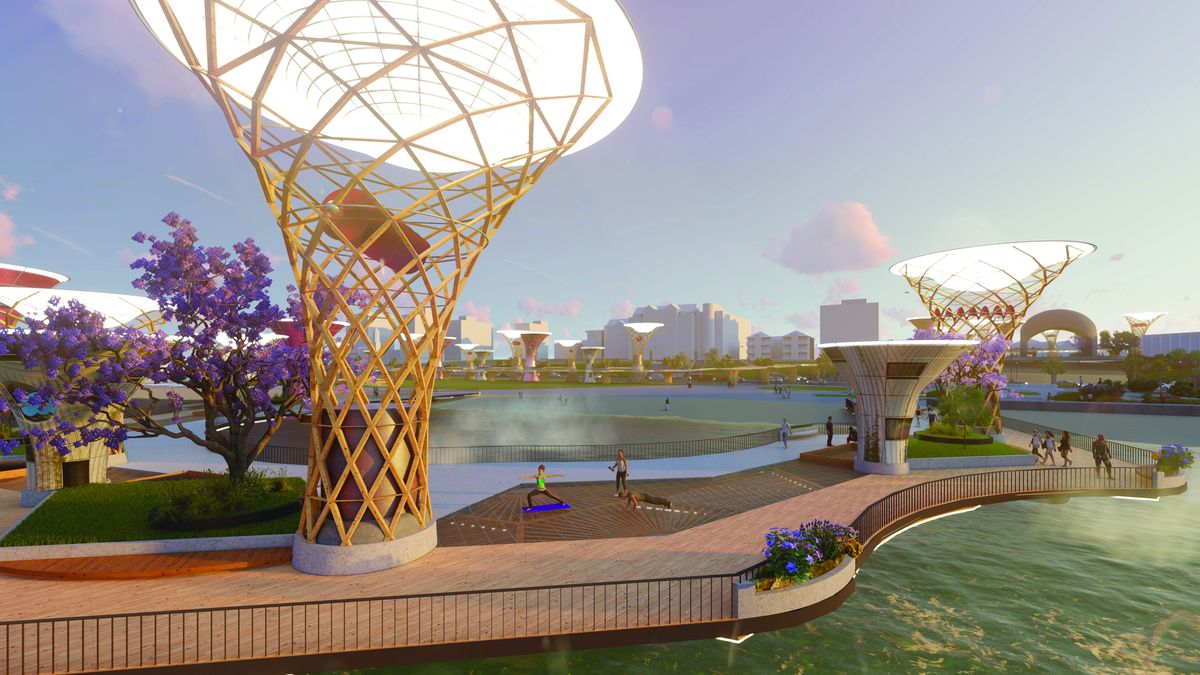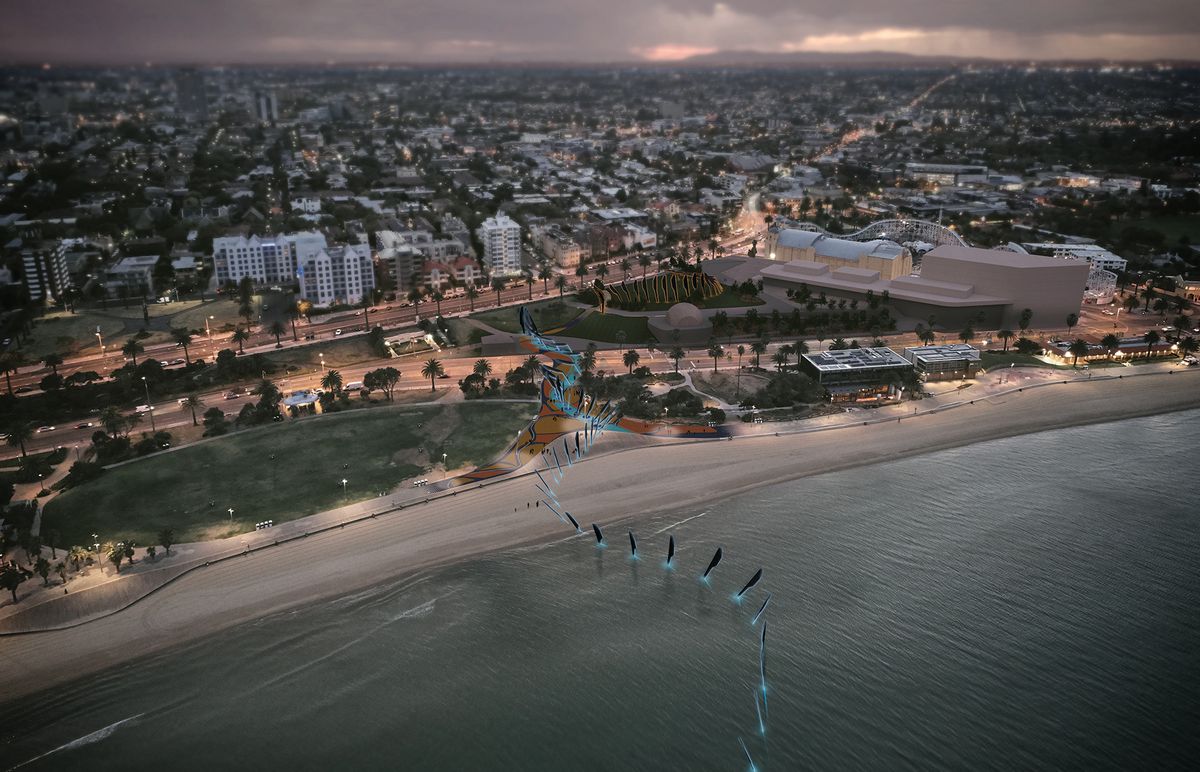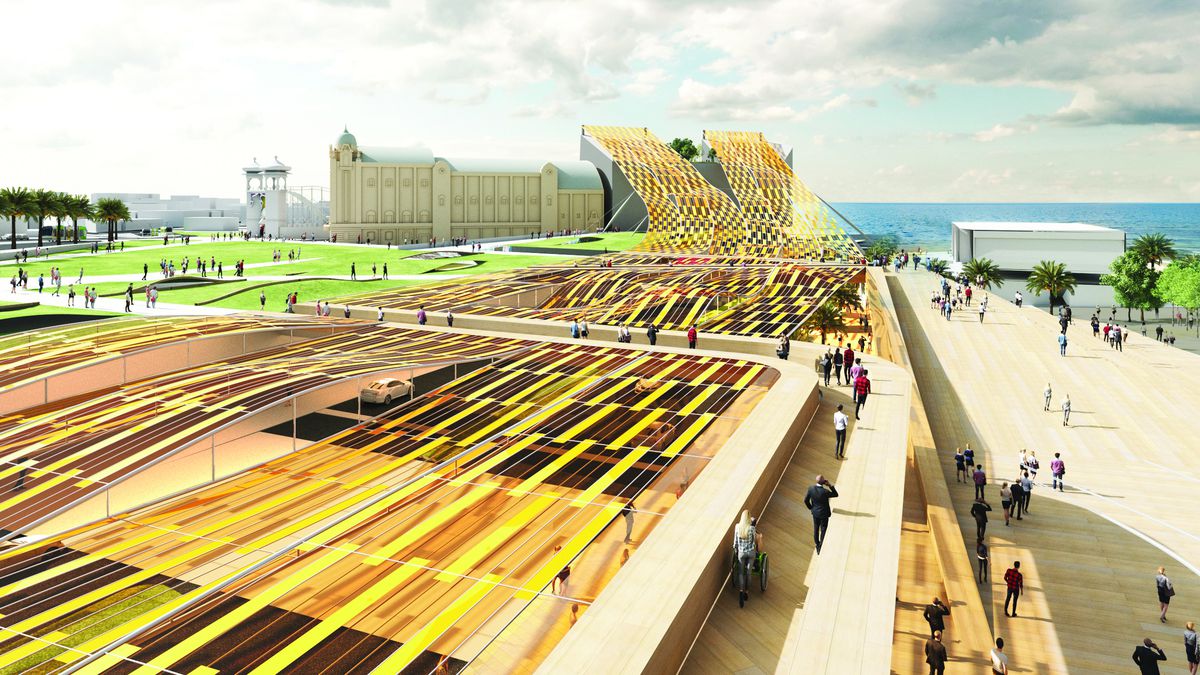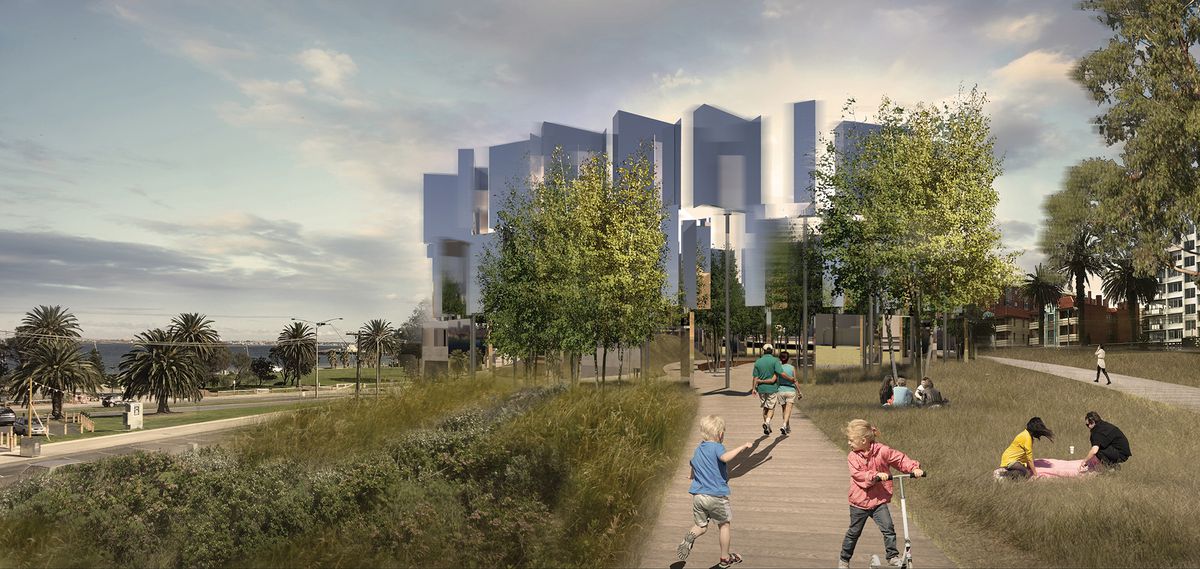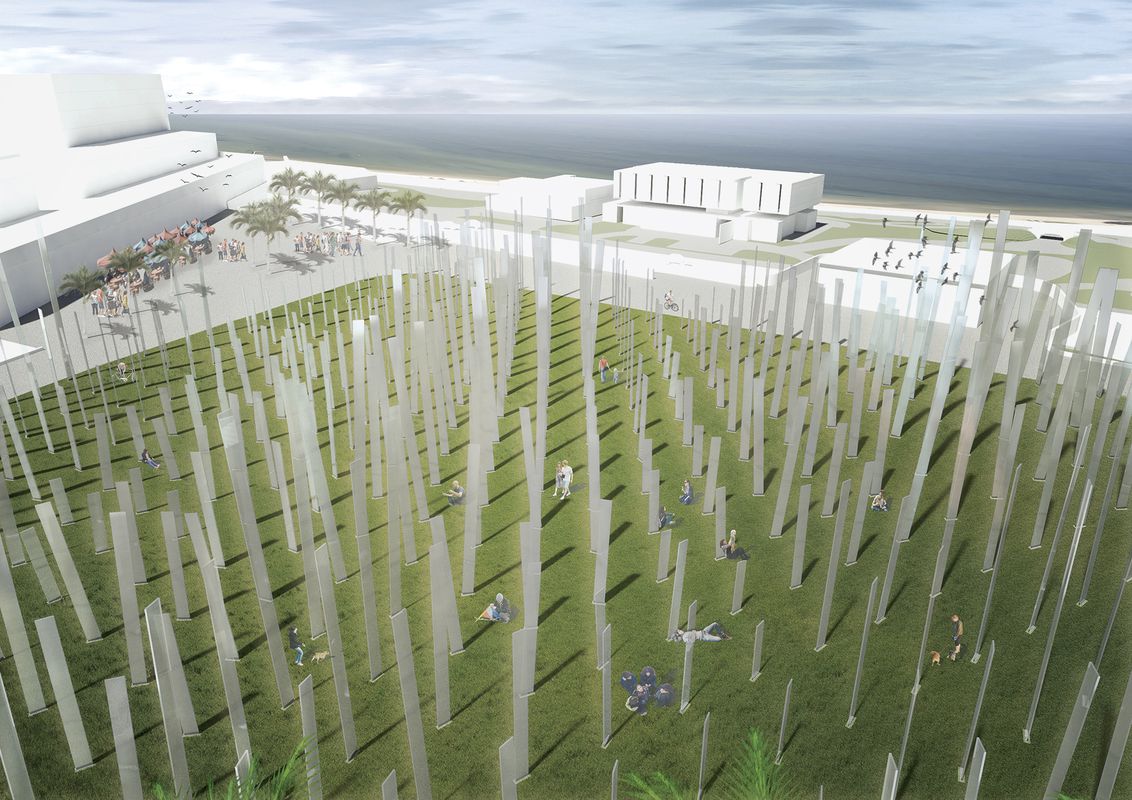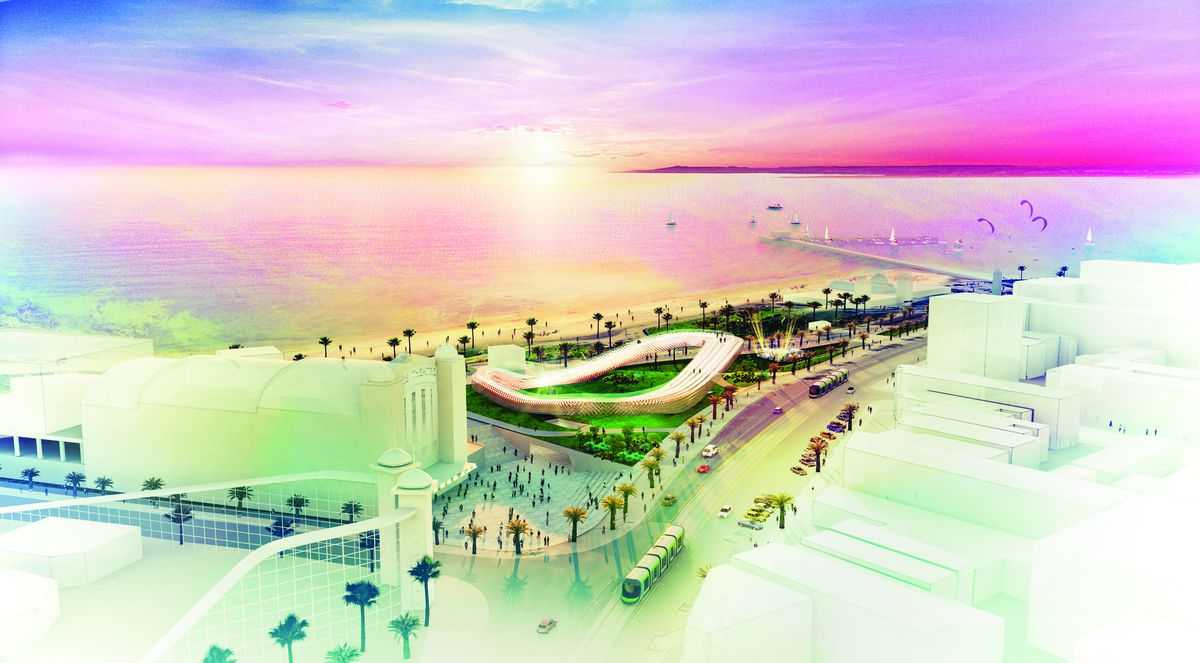Eight Australian teams are among the twenty-five teams whose designs have been shortlisted in the 2018 Land Art Generator design competition.
Participants from more than fifty countries world-wide submitted concept proposals for large-scale works of public art capable of producing clean energy for Melbourne’s St Kilda Triangle site.
Elizabeth Monoian and Robert Ferry, co-founders of the Land Art Generator Initiative which is running the competition were overwhelmed by the depth of vision evidenced by LAGI 2018 participants and delighted by the Australian submissions.
“We’ve never had so many local and regional teams dominate the shortlist before. It’s a testament to the passion that is held locally for the St Kilda Triangle site and the value placed on design and art in the context of climate solutions for Australia,” they said.
The competition tasked entrants with superimposing an energy and art design onto a masterplan that has been developed since 2010 in concert between the City of Port Phillip Council and a deeply engaged community. While there is no guarantee that any of the projects will be constructed, the LAGI 2018 shortlist is intended to inspire the St Kilda community about how the masterplan for the Triangle can become net-zero carbon while also hosting the latest innovation in civic art, becoming a must-see eco-tourism attraction.
Co-founder of Climarte and jury member for LAGI 2018 Guy Abrahams: “We really need things that will link people between the world we know and the world we know we need. My hope is that the winning design will display imagination, creativity, and technical know-how, but also is something which, given the appropriate support, could actually be built.”
The eight shortlisted Australian entries are:
2000 Murnongs by Azin Emampour, Xiao Lin and Qidi Li, – a proposal for a collection of 2,000 elevated wind-energy generating planter boxes filled with vegetation that references the former St Kilda foreshore landscape;
Light Up by Martin Heide, Dean Boothroyd, Emily Van Monger, David Allouf, Takasumi Inoue, Liam Oxlade, Michael Strack, Richard Le (NH Architecture); Mike Rainbow, Jan Talacko (Ark Resources); John Bahoric (John Bahoric Design); Bryan Chung, Chea Yuen Yeow Chong and Anna Lee, Amelie Noren (RMIT students) – a proposal for an expansive solar, wind and plant fuel-cell energy harvesting and storage landform;
Ngargee by Soren Luckins, Ashleigh Adams, George Thompson, Kate Luckins, Alan Pears, Erin Pears, Peter Bennetts, Jasmine Sarin, Elder Arweet Carolyn Briggs, Rae Fairbairn and Dave Stelma – a proposal for an series of feather-like forms embedded into the landscape that evoke the stories of the Boonwurrung people.
Pitch! by Bryan Fan and Shelley Xu – a proposal for an interactive light sculpture landscape of solar energy harvesting glass panes;
Rotor by Louis Gadd, Aimee Goodwin and Danny Truong – a proposal for an installation of reflective wind turbines that visualises the energy of unseen forces;
St Kilda Halo by Pete Spence, Hiroe Fujimoto, Sacha Hickinbotham, Michael Richards, Alison Potter and Jason Embley (Grimshaw Architects) – a proposal for a large-scale interactive art sculpture that provides shade and incorporates solar energy harvesting technologies;
The Canopy by Kieran Kartun, Sonni Jeong and Matthew Wang – a proposal for a modular, urban renewable energy “park” with energy-harvesting “tree” structures.
The Rainbow Serpent by Arthur Stefenbergs, Lucian Racovitan, Keith McGeough and Ovidiu Munteanu – a proposal for a solar harvesting glass “staircase” that also converts kinetic energy into electricity.
The final winning teams in the LAGI competition will be announced on 11 October at Federation Square in Melbourne at the launch of a week-long exhibition, followed by an exhibition in Acland Street Plaza opening on October 19.












